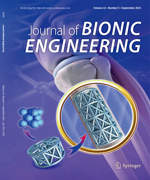Robots play an important role in underwater monitoring and recovery operations, such as pollution detection, submarine sampling and data collection, video mapping, and object recovery in dangerous places. However, regular-sized robots may not be suitable for applications in some restricted underwater environments. Accordingly, in previous research we designed several novel types of bio-inspired microrobots using Ionic Polymer Metal Composite (IPMC) and Shape Memory Alloy (SMA) ac-tuators. These microrobots possess some attributes of compact structure, multi-functionality, flexibility, and precise positioning. However, they lack the attributes of long endurance, stable high speed, and large load capacity necessary for real-world appli-cations. To overcome these disadvantages, we proposed a mother-son robot system, composed of several microrobots as sons and a newly designed amphibious spherical robot as the mother. Inspired by amphibious turtles, the mother robot was designed with a spherical body and four legs with two Degrees of Freedom (DOF). It is actuated by four vectored water-jet propellers and ten servomotors, and it is capable of walking on land and cruising underwater. We analysed the mother robot’s walking and underwater cruising mechanisms, constructed a prototype, and carried out a series of experiments to evaluate its amphibious motions. Good motion performance was observed in the experiments.

 Table of Content
Table of Content
 Table of Content
Table of Content